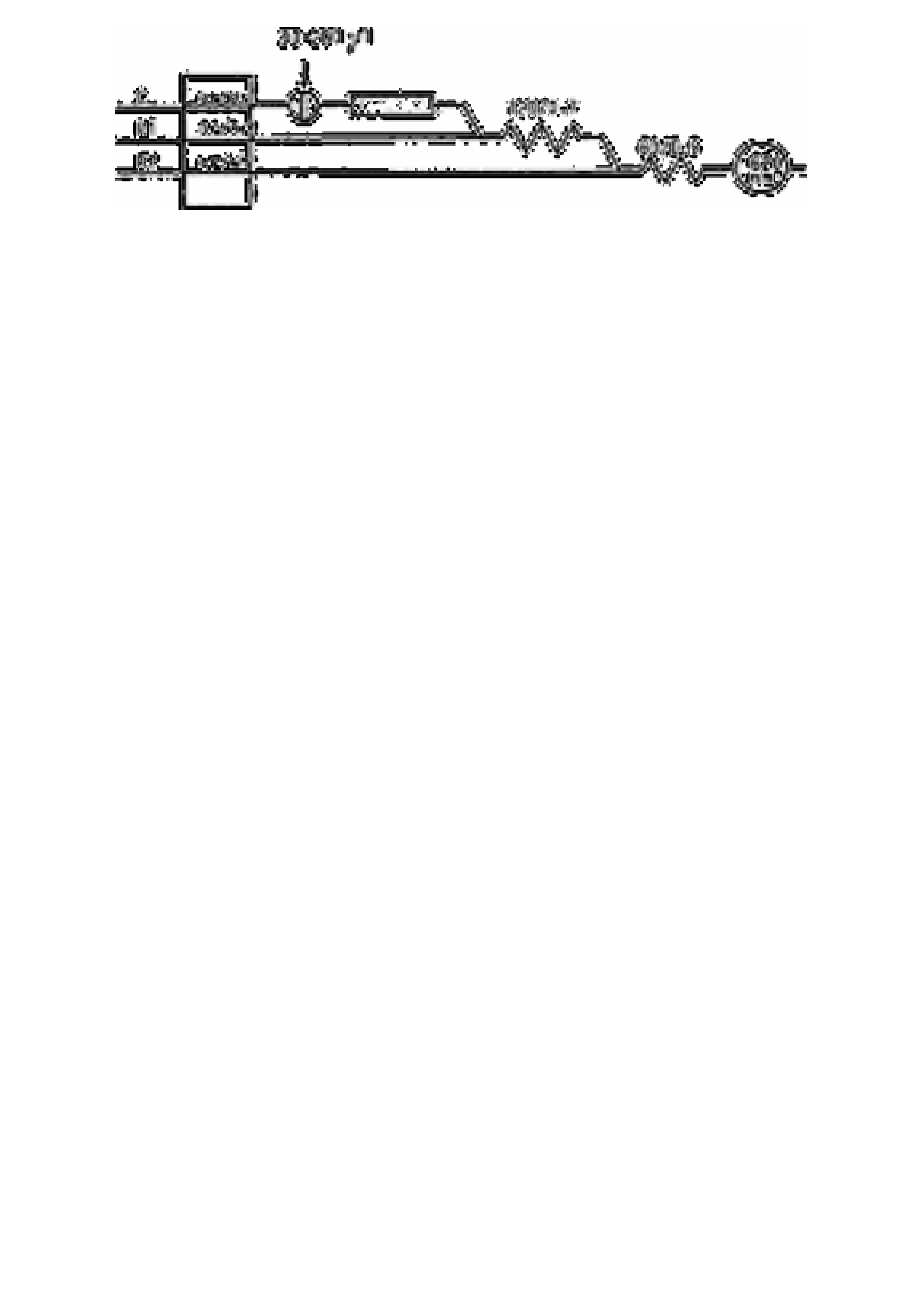Chemistry Reference
In-Depth Information
Fig. 5.2
Flow injection apparatus for determination of sulphate
C=distilled water
R
1
=0.116mg methylthymol blue sodium salt, 6ml M hydrochloric acid, 80ml
distilled water, 14ml barium chloride (1.526g L
−1
, BaCl
2
2H
2
O),
made up to 1L with 95% ethanol
R
2
=0.036M sodium hydroxide in 44% ethylalcohol
Source: Reproduced with permission from Tecator Ltd. [40]
Workers at Tecator Ltd [39,40,41] have described flow injection analysis methods for the
determination of sulphate in rain in the concentration range 5-30mg L
−1
. This method is
based on the formation of a methylthymol blue complex with an adsorption maximum of
620nm with barium ions in an alkaline solution. When sulphate ions are added, the
barium ions separate from the complex and form barium sulphate which results in a
decrease in absorbance which is a direct measure of the sulphate content of the sample.
The apparatus is illustrated in Fig. 5.2.
The application of this technique is also discussed under multianion analysis in section
5.1.14.4.
5.1.11.4
Flame emission spectrometry
Wagner and Steele [42] describe a technique for analysing 0-4mg L
−1
of sulphate in rain
water, which is based on the change in the solubility of powdered barium sulphate in rain
water, caused by the common ion (sulphate) at a constant temperature and ionic strength.
The barium ion concentration, which measures barium sulphate solubility, is determined
by flame emission spectroscopy.
5.1.11.5
Ion selective electrodes
Scheide and Durst [43] have described an indirect method for determining 2-100mg L
−1
sulphate in rainwater and non saline waters by an ion selective electrode. Isopropanol
(80%) is added to the sample which is then titrated with lead nitrate solution, the end-
point being determined with a lead ion selective electrode. The reproducibility of results
is better than 2%.

Search WWH ::

Custom Search